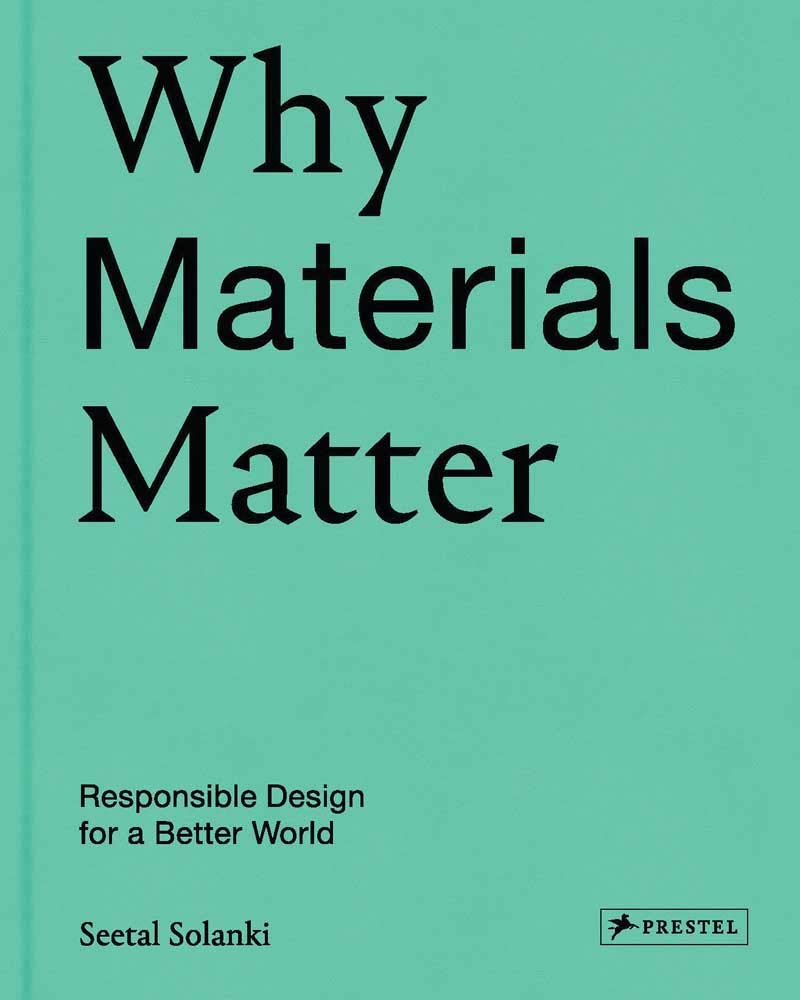Why Materials Matter
Why Materials Matter: Responsible Design for a Better World
Seetal Solanki
Prestel, November 2018

Hardcover | 9-3/4 x 12 inches | 240 pages | 250 color illustrations | English | ISBN: 978-3791384719 | $50.00
Publisher Description:




Author Bio:
(Note: Books bought via these links send a few cents to this blog, keeping it afloat.)




Seetal Solanki
Prestel, November 2018

Hardcover | 9-3/4 x 12 inches | 240 pages | 250 color illustrations | English | ISBN: 978-3791384719 | $50.00
What does it mean to live in a material world, and how do materials of the past and present hold the keys to our future? This book tackles these questions by focusing on various issues that human beings face and by discussing potential materials-related solutions. Through the lens of intriguing projects by designers, artists, makers, and scientists, it presents a colorful panoply of ideas, technologies, and creative efforts that focus on the earth’s most basic elements, while also showing how these elements can be transformed into entirely new materials. It explores, for example, how ancient practices such as dyeing fabric and making glue may hold the secret to renewable and earth-friendly consumer products, as well as how recycling plastics can tackle food waste, and how a type of light metal being developed may one day make air travel less fuel-reliant. This book also investigates the potential of the digital experience, suggesting how this most ephemeral type of matter can be used to improve our world. Eye-catching and provocative, Why Materials Matter serves as both a stimulating catalog of possibilities and a timely manifesto on how to consume, manufacture, and design for a better future.dDAB Commentary:
Telling a designer that materials matter would most likely elicit a response along the lines of "Well duh." But ask them if they considered using rubble-dash or sawdust or even cow dung (to pull examples from the spreads below) for their design instead of a most standard material, and they probably won't have such a pat response. Why Materials Matter, the new book from Seetal Solanki — her first — collects dozens of such cutting-edge, off-the-wall materials and presents them through the projects of designers in various fields. With such materials as sausage, blood, and fabricated air (yes, that's a thing), much of the book is geared to fields outside of architecture: fashion, industrial design, and even culinary design.Spreads:
Still, there are a few examples directly related to architecture, and two of them come from Assemble, the Turner Prize-winning collective based in London. For Café OTO's temporary performance space, Assemble collected rubble from the site, bagged it and compressed to create so-called rubble-dash walls for the timber roof. At Granby Workshop, a ceramics studio in Liverpool founded by Assemble, the collective created a line of door handles and other building fixtures that incorporated sawdust from demolished buildings in the surrounding neighborhood. In both cases Assemble delayed the movement of some rather prevalent materials to the dump, giving them extended lives — and a spot in this collection of materials that may someday be common, duh-inducing.




Author Bio:
Seetal Solanki is a London-based materials designer, researcher, writer and tutor in Interior Design Royal College of Art. She is also the Founder and Director of materials research design studio Ma-tt-er.Purchase Links:
(Note: Books bought via these links send a few cents to this blog, keeping it afloat.)



